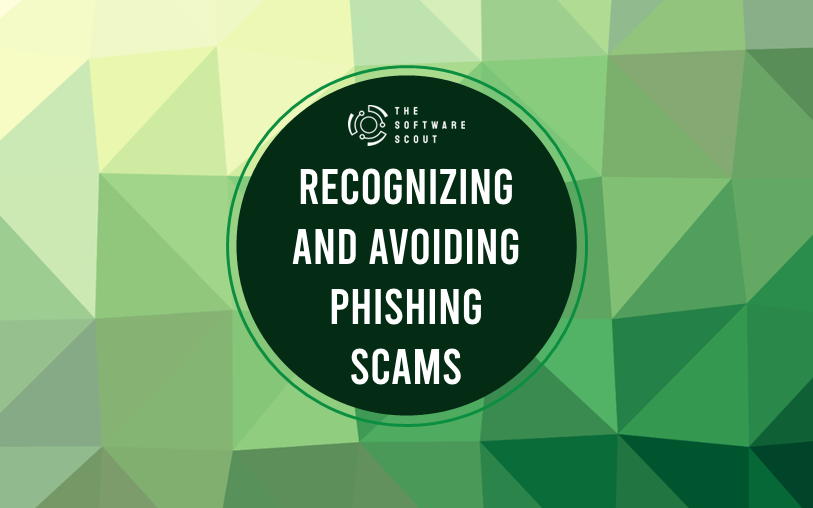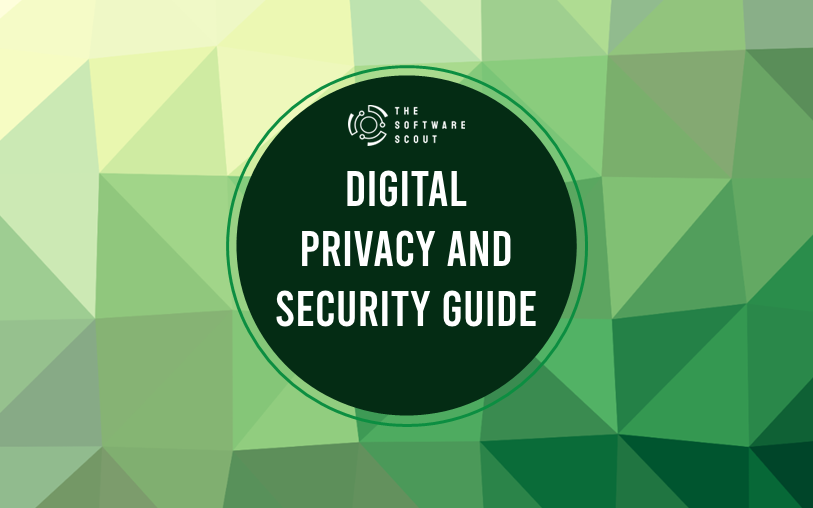Phishing scams have become one of the most widespread threats online. Cybercriminals are constantly finding new ways to trick users into giving up sensitive information. Recognizing and avoiding phishing scams is critical to protecting your personal information and keeping your financial data safe.
This guide will help you understand how phishing works, the common signs of a phishing scam, and the steps you can take to protect yourself

What Is Phishing?
Phishing is a type of online scam where attackers pose as legitimate organizations or individuals to deceive you into sharing personal data. This can include:
- Login credentials
- Credit card numbers
- Bank account information
- Social security numbers
Cybercriminals use various methods, such as fake emails, websites, and messages, to make their requests look as legitimate as possible.
Common Phishing Methods
Phishing attacks often happen through these primary methods:
- Email phishing: Fraudulent emails that appear to come from trusted organizations, such as your bank or a popular website.
- Spear phishing: Targeted attacks aimed at specific individuals, usually with more personalized content to increase the likelihood of success.
- Whaling: A form of spear phishing aimed at high-level executives or other important targets in an organization.
- Smishing: Phishing attempts via text messages (SMS).
- Vishing: Phishing attempts over phone calls or voicemails, tricking users into giving away personal information.
How to Recognize Phishing Scams
Being able to spot phishing attempts is your first line of defense. Here are the top signs to watch for:
1. Unsolicited Requests for Sensitive Information
Legitimate companies will never ask for sensitive information, like passwords or payment details, through email or phone calls. If you receive such a request out of the blue, it’s a red flag.
2. Suspicious Email Addresses or URLs
Phishing emails often come from addresses that look legitimate but have slight misspellings or odd domain names. For example, an email from support@netflix.com may be mimicked by support@netfliix.com.
Before clicking on any link, hover over it to see where it actually leads. If the URL looks suspicious or doesn’t match the official website, don’t click it.
3. Poor Grammar and Spelling Mistakes
Professional companies are careful about the language they use in their communications. If you notice unusual phrasing, odd language, or glaring spelling mistakes, it’s likely a scam.
4. Threatening or Urgent Language
Phishing scammers often create a sense of urgency to trick you into acting without thinking. Phrases like “Your account will be suspended!” or “Immediate action required!” are common tactics. Legitimate businesses typically won’t use such tactics to pressure you into responding immediately.
5. Attachments or Suspicious Links
Be wary of any unsolicited emails with attachments or links. Scammers can hide malware or viruses in these files, infecting your device if opened. If an attachment or link seems unnecessary or unexpected, don’t click it.
6. Unusual Requests or Out-of-Context Messages
If you receive a message from a colleague, friend, or company that seems out of character or irrelevant, be cautious. Scammers sometimes hijack email accounts or impersonate people you know to make their phishing attempts more convincing.
How to Avoid Phishing Scams
Now that you know what to look for, let’s focus on how you can actively protect yourself from phishing attempts. Here are practical tips you can implement today:
1. Verify the Source
Whenever you receive a suspicious email or message, verify the source. Instead of clicking links directly, visit the official website of the organization in question by typing the URL manually into your browser. If you’re unsure, call the company’s customer service directly using a number found on their official site.
2. Enable Two-Factor Authentication (2FA)
Two-factor authentication adds an extra layer of security. Even if a scammer manages to get your password, they would still need access to your secondary authentication method, like a phone or app-generated code, to log in. This can dramatically reduce your risk of falling victim to a phishing attack.
3. Keep Your Software Updated
Regularly updating your software and operating systems can help you avoid phishing scams. Many attacks exploit known vulnerabilities in outdated software. By keeping everything up-to-date, you minimize those risks.
4. Use Security Tools and Browser Extensions
Browser extensions and security tools like anti-phishing filters, antivirus programs, and firewalls can help identify and block phishing attempts before they reach you. Some popular tools include:
- Avast Anti-Phishing Tool
- Norton AntiVirus
- Google Safe Browsing
These tools can automatically flag suspicious emails or websites for you.
5. Be Cautious with Emails
When it comes to emails, think before you click. Always:
- Avoid opening attachments or links from unknown senders.
- Inspect email addresses for any inconsistencies.
- Look out for generic greetings like “Dear Customer” instead of your actual name.
6. Educate Yourself and Others
One of the best ways to combat phishing scams is through awareness. Make it a habit to stay updated on the latest phishing tactics and share that knowledge with family, friends, and colleagues. The more people know about phishing, the harder it becomes for scammers to succeed.
What To Do If You Fall for a Phishing Scam
Even with all the precautions, it’s still possible to fall for a phishing scam. If it happens, acting quickly can reduce the potential damage.
1. Change Your Passwords
Immediately change your password for the compromised account, as well as any other accounts that may be using the same password. If you’re using a password manager, update it as well.
2. Enable Two-Factor Authentication (2FA)
If you haven’t already done so, enable two-factor authentication for your accounts to help prevent further access.
3. Contact Your Bank or Credit Card Company
If you provided any financial details, such as credit card numbers or banking information, contact your financial institution immediately. They can monitor your account for suspicious activity or freeze your card if necessary.
4. Monitor Your Accounts
Keep a close eye on your bank accounts, credit cards, and any other important online accounts. Look out for unauthorized transactions or login attempts. You may also want to set up alerts that notify you of any suspicious activity.
5. Report the Phishing Attempt
Reporting phishing scams can help prevent others from falling victim. You can report phishing emails and websites to:
- The Federal Trade Commission (FTC)
- Your email provider (e.g., Gmail or Outlook)
- The Anti-Phishing Working Group (APWG)
Most email services and social platforms also have built-in features for flagging and reporting suspicious content.
Advanced Phishing Tactics to Watch For
Cybercriminals are constantly evolving their tactics, making phishing scams harder to detect. Here are some advanced phishing techniques that may catch even seasoned users off guard:
1. Clone Phishing
Attackers copy a legitimate email you’ve previously received, replacing the links or attachments with malicious ones. Since it’s a duplicate of a real email, it may seem more convincing.
2. Man-in-the-Middle Attacks
In this scenario, hackers intercept communication between you and a legitimate entity, such as your bank, often via unsecured networks. They can then modify the communication to trick you into providing personal data.
3. Website Spoofing
A fake website that looks exactly like a legitimate one, often using a nearly identical URL. Victims believe they’re on the correct site and enter sensitive information like passwords or credit card details, which get sent directly to the scammers.
How Phishing Impacts Businesses
While phishing scams often target individuals, businesses are at significant risk as well. The potential consequences for businesses include:
- Data Breaches: Employees who fall for phishing scams may unknowingly give hackers access to sensitive company data, leading to security breaches.
- Financial Losses: Phishing can result in direct financial losses if bank accounts are compromised or if ransomware is deployed.
- Reputation Damage: Businesses that experience data breaches due to phishing attacks can lose the trust of customers, leading to long-term damage to their reputation.
How to Train Your Team to Avoid Phishing
Phishing scams targeting employees are a common entry point for attackers. To protect your organization, it’s essential to train your team effectively. Here’s how to set up a phishing awareness program:
- Run Phishing Simulations: Regularly simulate phishing attacks to test employees’ knowledge and see how they respond. Provide follow-up training based on the results.
- Educate on Common Tactics: Teach employees to recognize phishing attempts, like suspicious attachments, poor grammar, and urgent demands.
- Promote Reporting: Encourage employees to report any suspicious emails or messages without fear of repercussion. Make sure they know who to contact and how to report potential threats.
- Update Policies: Regularly update your company’s cybersecurity policies to include the latest information on phishing tactics and prevention techniques.
Conclusion: Stay Vigilant and Safe
Phishing scams are evolving constantly, but by staying informed and practicing the steps outlined in this guide, you can protect yourself from becoming a victim. Recognizing the common tactics scammers use, verifying sources, and keeping your software up-to-date are some of the best defenses against these attacks.
Avoiding phishing scams isn’t just about technology – it’s about building habits that keep your information secure. Always think before you click, and when in doubt, err on the side of caution.
Boyd Hudson is a technology writer at The Software Scout with over 15 years of experience in technology roles across the Asia-Pacific region. He covers a wide range of tech topics, from software solutions to emerging industry trends

